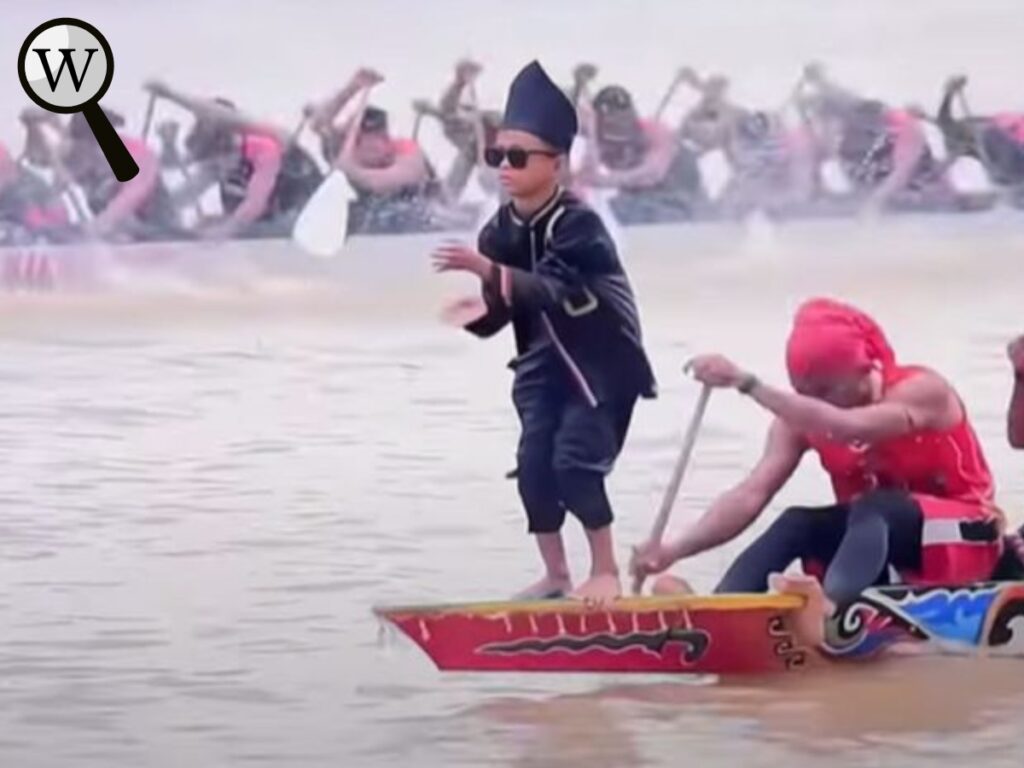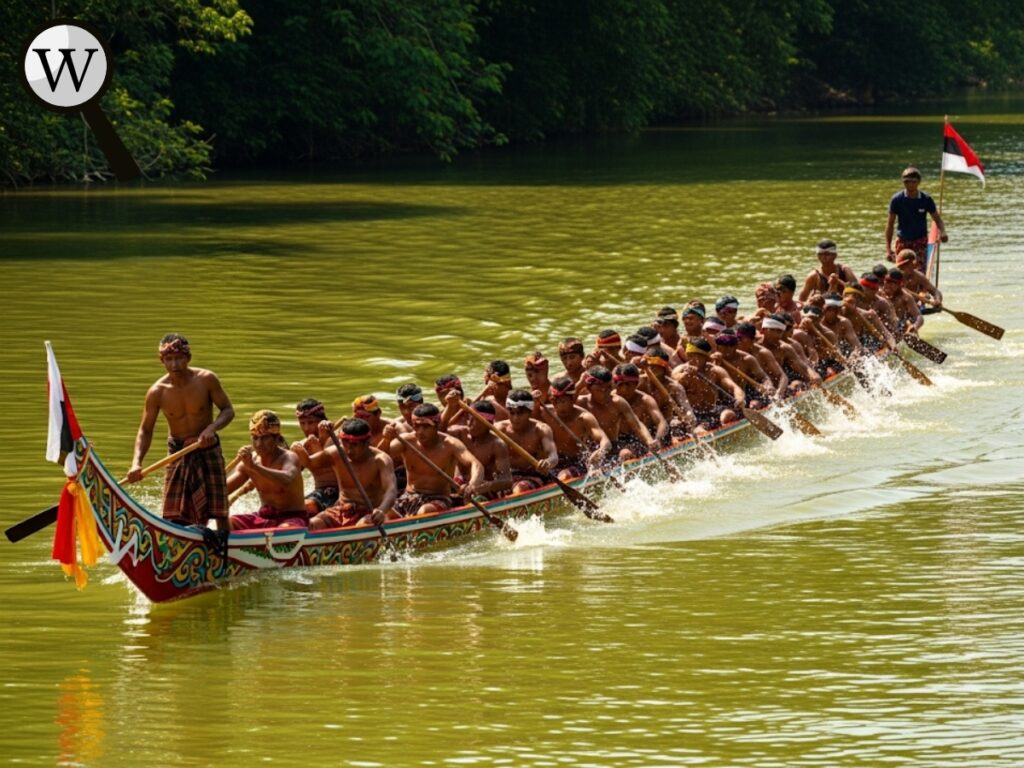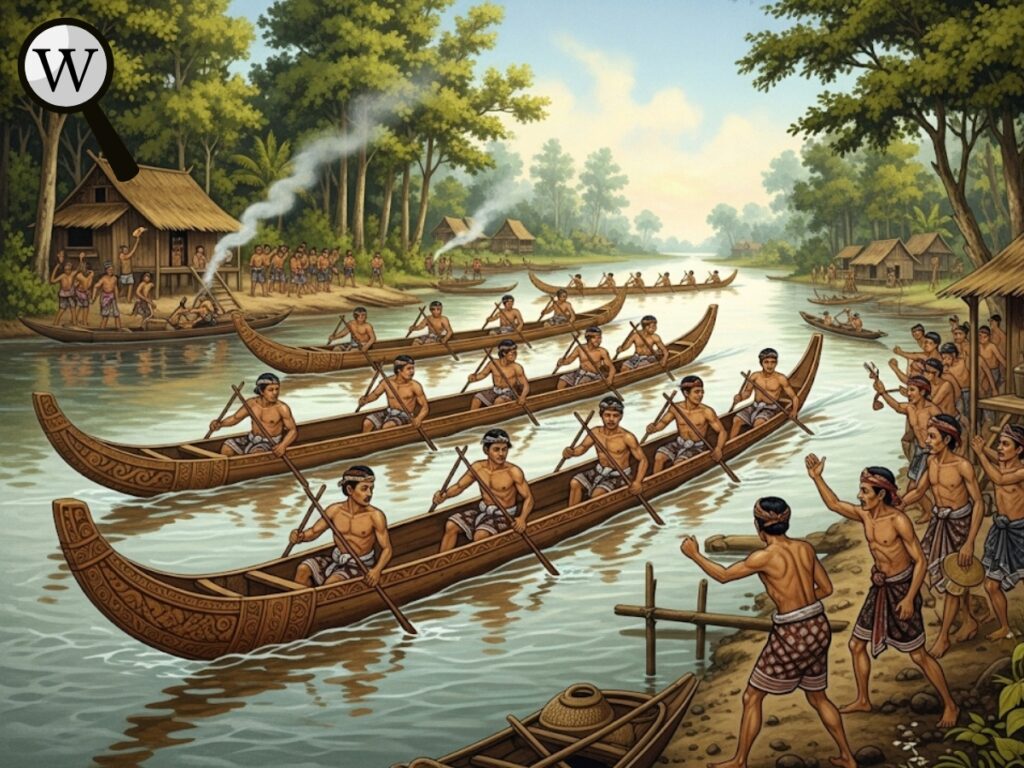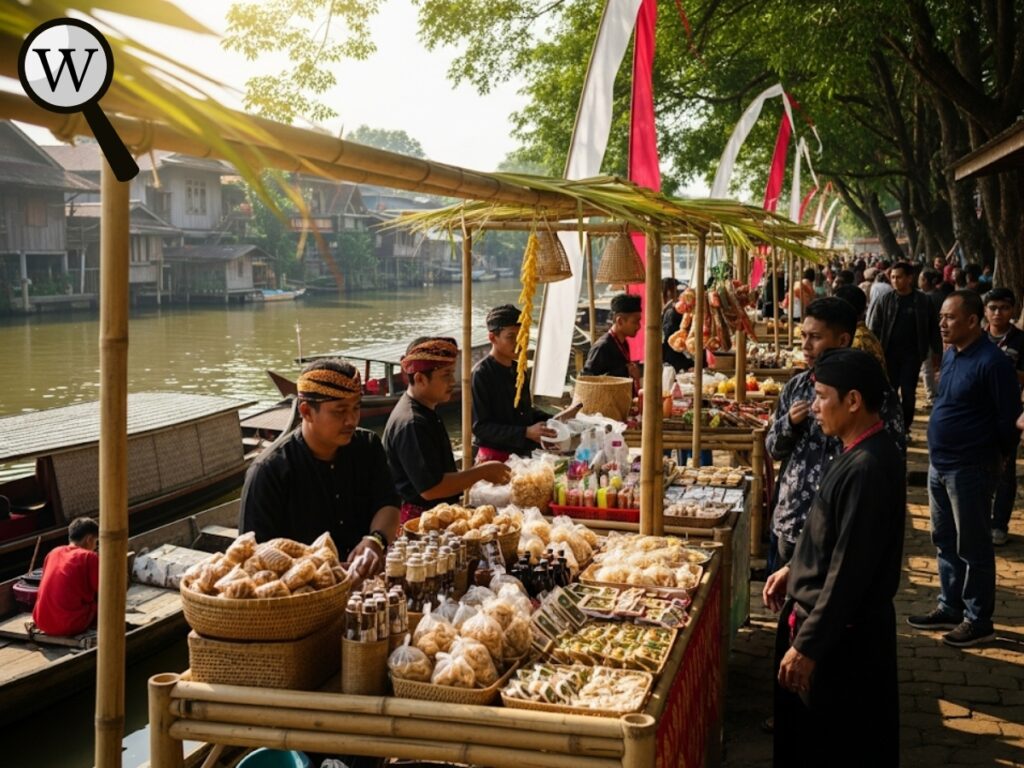
you’ve scrolled through your feed recently, chances are you’ve come across a clip of a small kid — dressed like a tiny king, sunglasses on, dancing confidently at the front of a vibrant boat — while dozens of rowers paddle furiously behind him. It’s funny. It’s charming. It’s going viral. But that little scene? It’s not just for show.
Welcome to Pacu Jalur, one of Indonesia’s oldest and most spectacular traditional sports.
What Is Pacu Jalur?

Pacu Jalur is a traditional boat race from the Riau Province in Sumatra, Indonesia, held on the Kuantan River. The name literally means “boat race” in the local language. But calling it a boat race doesn’t do it justice.
These aren’t ordinary boats. They’re massive, hand-carved wooden canoes—some stretching up to 40 meters long, with crews of 40 to 60 rowers working in perfect rhythm. Each boat is a moving work of art, painted with mythological patterns, crowned with decorations, and sometimes even shaped like dragons.
Who’s the Dancing Kid?
He’s called the Penari Jalur, or “boat dancer.” Usually a young boy, he stands fearlessly at the front of the boat, performing traditional dance moves while the crew rows behind him. His role is more than decorative — he’s a symbol of pride and motivation, believed to bring spirit and strength to the team. His performance is both cultural and competitive. And yes, he’s the reason this whole tradition is going viral now!
Where Did It All Begin?

The roots of Pacu Jalur go back to the 17th century. Back then, the people of Kuantan used these longboats for transportation along the river. Over time, villages started racing each other’s boats during festivals and religious holidays. Eventually, it became a major event. During the Dutch colonial era, races were held to welcome royal guests or celebrate national events. After Indonesia’s independence, Pacu Jalur transformed into a symbol of unity, heritage, and celebration, held every August to coincide with Indonesia’s Independence Day (August 17th).
Check out more fascinating stories from the past in our History category!
More Than Just a Race
Today, Pacu Jalur is a week-long cultural festival that draws thousands of visitors. It includes:
- Traditional music and dance
- Local crafts and food stalls
- Parades and river shows
- And, of course, the epic boat races
It’s not just about winning — it’s about preserving a piece of history, celebrating community, and passing tradition down to younger generations.
The Art and Craftsmanship Behind Every “Jalur”
The sheer scale and beauty of the Pacu Jalur boats are astounding. These aren’t just vessels; they are masterpieces of local craftsmanship. The process of creating a “jalur” (the boat itself) is a testament to communal effort and ancestral knowledge.
Typically, a new boat begins with selecting a suitable tree from the forest, a process often guided by traditional beliefs. Once felled, the massive log is carefully shaped and hollowed out using hand tools. This intricate work can take several months, involving skilled artisans from across the village. The wood is meticulously smoothed, treated, and then adorned with vibrant, intricate carvings and paintings that often depict local mythology, flora, and fauna. Each detail, from the dragon-head prow to the swirling patterns along the hull, tells a story and is believed to imbue the boat with spirit and speed. The investment in time, labor, and materials means that each “jalur” is a cherished symbol of the community it represents.
Training and Team Spirit: The Heartbeat of Pacu Jalur
Beyond the beautiful boats and the captivating “Penari Jalur,” the true spirit of Pacu Jalur lies in the dedication of its crew. Training for the race is an intensive, year-round commitment. Rowers, often farmers and fishermen, spend countless hours practicing together, perfecting their synchronization and building their endurance.
A crew of 40 to 60 individuals must move as one, their paddles dipping and rising in perfect unison, guided by the rhythmic chants of the commander. This rigorous training not only builds physical strength but also fosters an unbreakable bond and a profound sense of camaraderie among the team members. The success of a Pacu Jalur team is a reflection of the unity and discipline of the entire village.
Pacu Jalur: A Community’s Pride and Economic Boost

The annual Pacu Jalur festival is more than just a sporting event; it’s a significant cultural and economic driver for the Kuantan Singingi Regency. Thousands of visitors, both domestic and international, flock to the region each August, generating substantial revenue for local businesses.
- Tourism Impact: Hotels, guesthouses, and homestays see a surge in bookings.
- Local Economy: Food stalls, craft vendors, and transportation services thrive during the festival week. Small businesses, often family-run, rely on this period for a significant portion of their annual income.
- Cultural Exchange: The festival provides an invaluable platform for showcasing the rich culture and traditions of the Riau Province to a wider audience, fostering understanding and appreciation for Indonesian heritage.
This influx of activity strengthens the local economy and reinforces the community’s commitment to preserving this magnificent tradition.
Why It Matters
In a world rushing toward modernity, Pacu Jalur is a proud reminder that ancient traditions can still thrive — and even go viral — without losing their meaning. It’s been recognized as an Intangible Cultural Heritage by the Indonesian government and is one of the largest traditional boat races in Southeast Asia.
So next time you see that dancing kid trending on your feed, remember: He’s not just dancing. He’s honoring centuries of culture — one confident step at a time.
✨ Bonus Fact: Each boat takes months to build and decorate, and entire villages often raise funds and train together to prepare their teams — it’s a full community effort.
Learn More About Pacu Jalur:
Discover more about the rich history of Pacu Jalur







